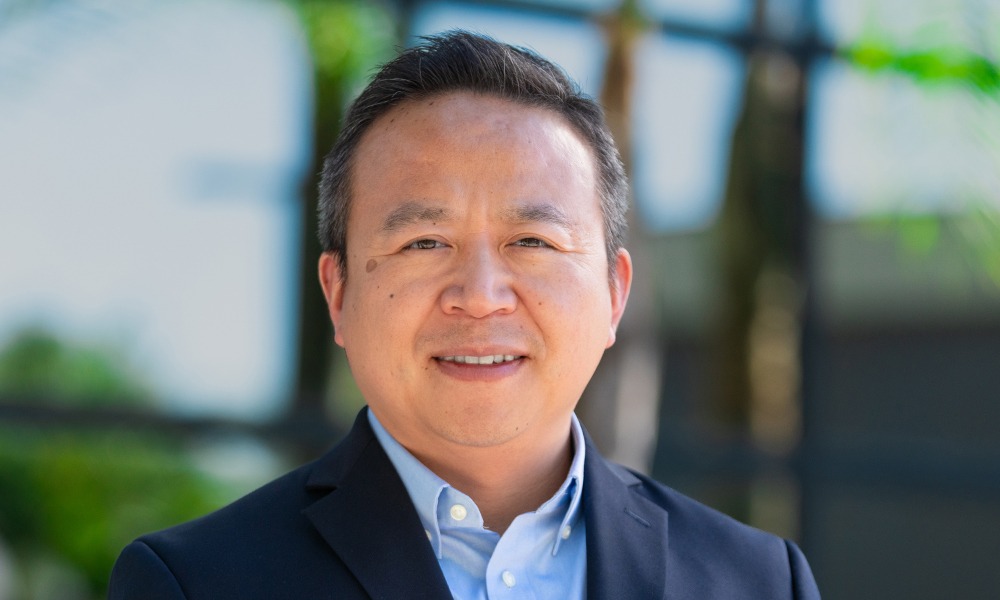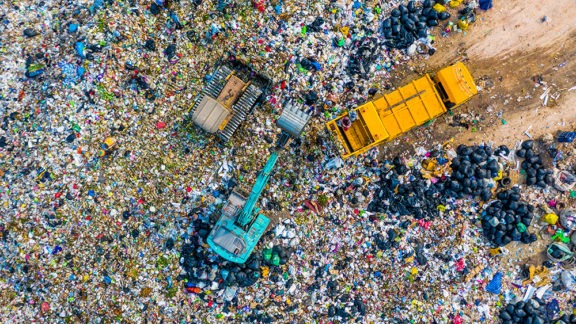As the leader of the Applied Research program, John Xiong guides Haley & Aldrich’s search for novel solutions to contamination challenges. Recently, for example, John led a team developing a process to destroy per- and polyfluoroalkyl substances (PFAS) using less energy than with comparable technologies — potentially a cost-effective way to get rid of these “forever chemicals” in the real world. John is also leading a team to develop an innovative in situ technology for evaluating PFAS precursor transformation in soil and groundwater.
John thrives on tackling such complex environmental problems. With a doctorate in civil engineering and years of consulting and research experience, he aims to find innovative solutions that will work beyond the lab. “PFAS are a huge environmental issue, and everyone worries about their impact — our clients, regulators, the public in general,” he said. “Any time I encounter a problem of that scale, I feel really motivated to have our research program help.”
How does the Applied Research program work?
The key thing is that it’s a team: Haley & Aldrich established the program more than a decade ago, and it has brought and kept many like-minded people together. We all prioritize collaboration, we share many interests, and we care about the practical applications of our research.
The U.S. Department of Defense (DOD) has funded most of our projects so far. They’re one of the few agencies that continue to fund remediation-focused research projects at a large scale. And they care a lot about solving many of these contamination problems because they’re impacted — for example, they have a lot of PFAS contamination because, historically, DOD sites used aqueous film-forming foam [AFFF, a fire-fighting foam that contains PFAS]. So, our projects have roots in real needs. Technologies and knowledge developed from these research projects help the DOD, and many other clients in various market segments that have similar contamination challenges, in cost-effectively and efficiently addressing their cleanup issues.
In addition to the DOD, we are actively participating in and pursuing applied research projects funded by many other organizations, such as the Air Force Civil Engineer Center, Airport Cooperative Research Program, Bureau of Reclamation, Department of Energy, National Science Foundation, and Water Research Foundation.
How do you decide what research to focus on?
Each year, the DOD sends out a statement of need, which spells out the kinds of problems they have and the kinds of solutions they are interested in funding. So, we start there to see where we can propose innovative ideas to meet those needs.
These statements of need are driven not just by the DOD priorities but also by the bigger research picture. I saw this firsthand last year, as I was fortunate to participate in the committee that helped the DOD define its research and demonstration needs related to PFAS for the next five years. It involved people from the military, academia, regulatory, and the consulting world. Our objective was to evaluate the kind of research that has been and is currently getting funded and where there are still technology and knowledge gaps we need to close.
What notable success has come out of the Applied Research program?
One is DyeLIF, a dye-enhanced laser-induced fluorescence probe that made it possible to map certain chlorinated solvents in groundwater. Adrian Fure and Murray Einarson led this research in collaboration with Dakota Technologies. Before the project, there was no reliable way to detect these solvents in the DNAPL [dense non-aqueous phase liquid] phase. Now, DyeLIF is commercially available and being used to provide fast, high-resolution subsurface maps of contamination, speeding up the time frame for investigating and remediating soil and groundwater problems.
What issues do you see on the horizon for contaminated site remediation?
PFAS will remain a major issue — more specifically, cost-effective remediation for PFAS in different environmental media. Now, we’ve developed proven tech to treat PFAS in water, but almost everyone still has to rely on pretty standard conventional methods — so-called separation technologies — to treat PFAS in water. At the end of those processes, you have concentrated waste, which then needs to be treated again. So the research community at large is still trying to find more efficient, cost-effective approaches to PFAS destruction.
Beyond PFAS, there will be more emerging contaminants to watch for. And even with conventional contaminants that we’ve learned how to treat, there can be increasingly stringent remediation objectives — which means we’re always looking for new, more efficient technologies.
Published: 11/29/2023
- Aerospace
- Energy
- Environmental trusts
- Government infrastructure
- Industrial and manufacturing
- Real estate developers
- Contaminated site management
- Emerging contaminants
- PFAS
Author

Principal Consultant, Applied Research Leader




